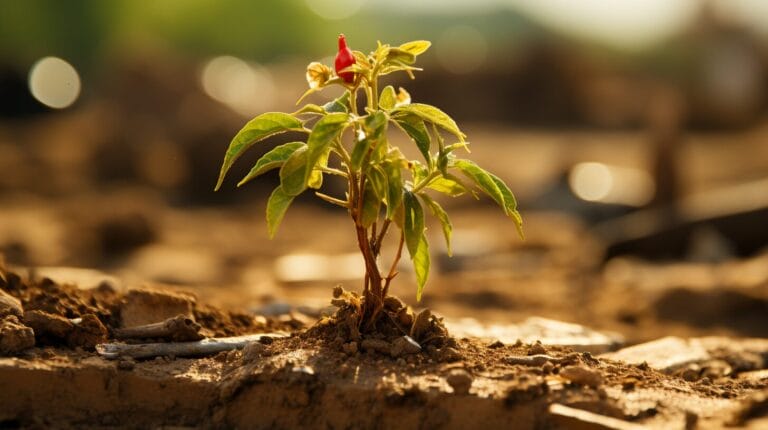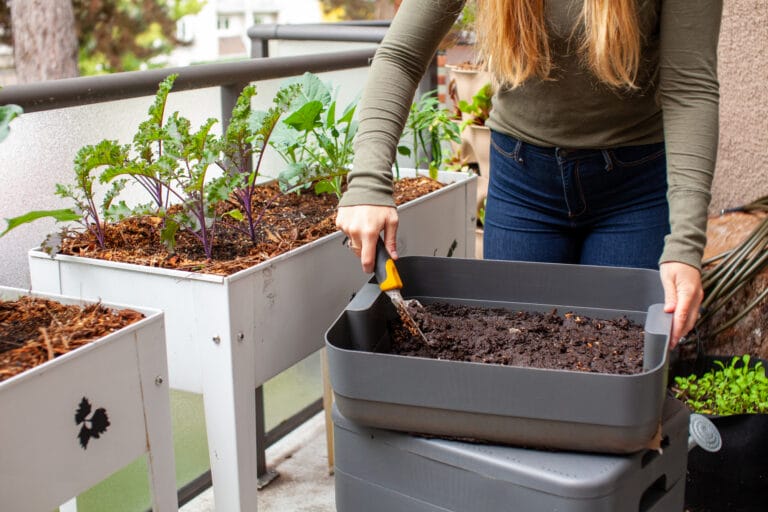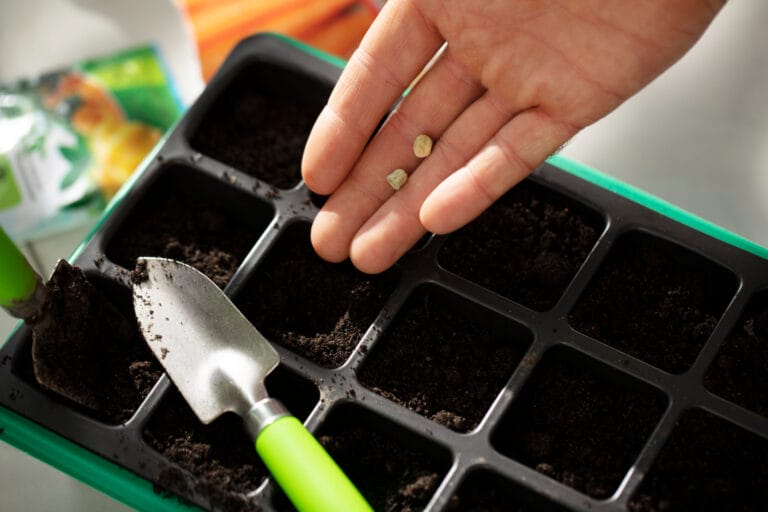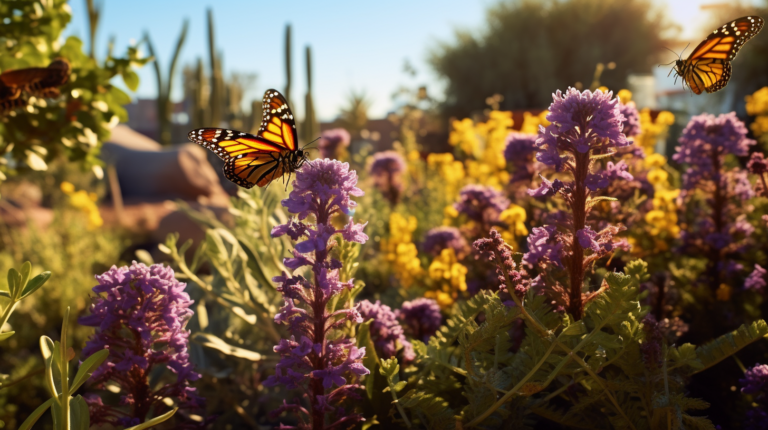Having a vibrant, green lawn is a delight for any homeowner. It enhances the visual charm of a property and can substantially boost its value. Nonetheless, sustaining such a lovely green patch demands special attention. Specifically, the optimal time to fertilize is a crucial component of best lawn care practices. So, what is the best time to fertilize your lawn? Intriguingly, the preferred time is late afternoon or early evening. Let’s delve into the particulars of effective lawn fertilization. Without a doubt, your lawn will thank you!
Key Takeaways
- Late afternoon or early evening is the optimal time to fertilize your lawn, given the cooler temperatures and dry grass.
- Applying fertilizer during direct sunlight can be harmful to the grass.
- Moisture is vital for effective fertilizer absorption—make sure the soil is already moist or rain is anticipated shortly after application.
- Utilizing a spreader for granular fertilizer ensures homogenous distribution across your lawn, preventing over-fertilization in certain areas.
Understanding Lawn Fertilization

Lawn fertilization refers to the application of specific nutrients to foster growth and maintain overall health. Fertilizers are special formulations containing essential elements like nitrogen, phosphorus, and potassium (NPK) in varying proportions. They supply the necessary nutrients for optimal grass growth. By grasping the basics of lawn fertilizer and its benefits, you can ensure optimal nourishment for your lawn.
Understanding Lawn Fertilization
What is Lawn Fertilizer?
Lawn fertilizer acts as nourishment for your grass. It contains essential elements like nitrogen that maintains the grass’s vibrant green appearance and promotes leaf growth. Phosphorus aids root development, thus fostering a strong plant structure, while potassium wards off diseases and ensures overall plant health. Using lawn fertilizer often helps prevent weed growth, as the grass becomes robust enough to fend them off on its own.
Benefits of Fertilizing Your Lawn
Fertilizing your lawn is the key to maintaining its vigor and green charm. Here’s why it benefits your grass:
- Supplies Nutrients: Fertilizer provides the essential nutrients for the grass to flourish.
- Helps Grass Fight Stress: A well-nourished lawn is resilient! It can withstand heat, cold, bugs, or diseases without significant harm.
- Prevents Weed Growth: Thick and fast-growing grass leaves no room for weeds to sprout.
- Preserves the Green: Fertilizer enhances the lawn’s hue, keeping it vibrant and green throughout the year.
- Strengthens Grass: Fertilizer promotes root growth, fostering tough grass.
- Conserves Water: Healthy lawns retain water better, thus reducing water requirements.
- Promotes Grass Growth: Specific fertilizers like Scotts Turf Builder Starter Food expedite the sprouting of new seeds.
Choosing the Right Fertilizer for Your Lawn
Choosing the most suitable fertilizer for your lawn involves considering several factors. An important aspect lies in understanding the NPK ratio on fertilizer packages, representing the proportion of nitrogen (N), phosphorus (P), and potassium (K) in the formula. Each fertilizer is tailored to meet specific needs of the lawn based on these nutrients.
Moreover, picking a fertilizer compatible with your grass type is vital. Different species have specific nutrient needs. Therefore, selecting a specifically formulated fertilizer for your grass will ensure it receives adequate nutrients for its health and growth phase.
Understanding NPK on Fertilizer Bags
NPK stands for Nitrogen, Phosphorus, and Potassium – the key ingredients of a good fertilizer. The three numbers on the bag represent the concentration of these elements. Nitrogen aids in the grass’s green growth, while Phosphorous fosters strong roots. Potassium, on the other hand, reinforces overall plant health and disease resistance.
The grass type significantly influences the fertilizer mix choice. For instance, if your lawn needs prolific green growth, opt for a high nitrogen blend. If the lawn is relatively weak and requires strong roots, choosing a fertilizer rich in phosphorus would be beneficial.
Matching Fertilizer to Grass Type
Every grass species has unique nutritional requirements that its ideal fertilizer should meet. For instance, cool-season grasses thriving in spring and fall require a different nutrient mix than warm-season grasses like Bermuda or St. Augustine, which primarily grow in summer. Choosing the right fertilizer helps maintain your lawn’s health, fostering strong roots and maintaining a fresh, green appearance throughout the year. Always check the fertilizer bag’s label to ensure it’s suitable for your grass type.
The Importance of Timing in Lawn Fertilization
Applying fertilizer at the right time significantly enhances the effectiveness and health of your grass— understanding grass dormancy periods and the influence of the weather aids in identifying the ideal fertilizing time.
Identifying Grass Dormancy Periods
Understanding your grass’s growth and dormant periods is key to determining the most beneficial time to fertilize. For instance, cool-season grasses like Kentucky bluegrass are most active during spring and fall, while warm-season grasses like Bermuda grass thrive in summer. Timely application considering these periods allows the grass to make the most of the fertilizer’s nutrients, promoting healthy growth and reinforcing your lawn against weeds and stressors.
The Impact of Weather on Fertilization
Weather conditions significantly influence the usefulness of lawn fertilization. Factors like temperature, rainfall, and humidity affect how well fertilizer is absorbed and utilized. Typically, moderate temperatures between 60-80 degrees Fahrenheit are ideal for fertilization. Experts often recommend monitoring the rain forecast before fertilizing, as heavy rain could wash away nutrients before absorption, rendering the application ineffective.
The Best Time of Day to Fertilize Your Lawn
The optimal time to fertilize your lawn is during the late afternoon or early evening. During this period, temperatures are cooler, reducing the risk of burning your grass.
Morning dew could make the lawn too damp for fertilization. Most fertilizers are prefe rably applied when the grass is dry, enabling the fertilizer to reach the turf below the grass blades.
Late Afternoon or Early Evening Fertilization
During late afternoon or early evening, the cooler temperatures and absence of intense sunlight make it an ideal time to fertilize your lawn. Applying fertilizer in hotter conditions could cause damage and scorching. By fertilizing later in the day, your grass gets ample time to absorb the nutrients overnight, with minimal evaporation.
The Role of Moisture in Fertilization
Moisture is critical in enhancing the effectiveness of fertilization. The soil should either already be moist or rain should be expected soon after application. Moisture aids the fertilizer in dissolving and infiltrating the soil, allowing the grass roots to absorb it effectively.
Tips for Successful Lawn Fertilization
To fertilize your lawn effectively, consider using a broadcast spreader when applying granular fertilizer. This tool ensures an even distribution across your lawn, eliminating areas of over or under-fertilization. If you’re employing liquid fertilizer, follow the instructions for proper dilution and application rates. Regardless of the fertilizer type, always water your lawn after fertilizing. This critical step activates the soil nutrients and prevents burning of the grass blades.
Granular Fertilizer Application Tips
When applying granular fertilizer, consider these tips:
- Use a spreader: Spreading the fertilizer evenly is key to ensuring all parts of your lawn benefit. Adjust the spreader settings correspondingly to the recommended application rate on the package.
- Follow application rates: Adhere to the application rates specified for the granular fertilizer you’re using. Applying too much may harm your lawn, while too little won’t produce the results you desire.
- Ensure even coverage: Walk in straight lines while operating the spreader for an even coverage. Slightly overlapping each pass will help avoid any missed spots.
- Time it right: Choose a calm day when no rain is forecasted for at least 24 hours post-application to allow the granules to settle and prevent them from washing away.
- Water after application: Water your lawn lightly post application to activate the fertilizer and aid its penetration into the soil.
Using Liquid Fertilizer
Liquid fertilizer is an efficient and rapid way to nourish your lawn. Here are some tips for effective use:
- Dilute the fertilizer: Dilute the fertilizer based on package instructions to avoid damaging your lawn.
- Apply in late afternoon or early evening: Apply the fertilizer when the grass is dry for efficient absorption.
- Avoid application on wet grass: Fertilizing overly wet grass can cause runoff, potentially harming neighboring plants and water sources.
- Wait for dry conditions: Ensure the grass is completely dry before applying liquid fertilizer for optimal results. This step helps prevent potential damage due to remnant moisture on the leaves.
Conclusion
Ensuring the optimal time to fertilize is crucial for maintaining a healthy lawn. Late afternoon or early evening, when the temperature has cooled down and the grass is dry, is most suitable. Avoid applying fertilizer during direct sunlight or on damp grass, as it can lead to burning or sub-optimal absorption. With these tips, you’re well on your way to maintaining a vibrant and attractive lawn that will be the envy of others.
FAQs
- What is the best time to fertilize my lawn?The best time of day to fertilize your lawn is either in the late afternoon or early evening when cooler temperatures and morning dew can help absorb the fertilizer.
- When during the year should I apply fertilizer on my lawn?Fertilizer application is best during periods when your type of grass is actively growing, typically early spring for cool season grasses like Kentucky Bluegrass and late spring for warm season grasses.
- How do I choose the right type of fertilizer for my lawn?You can choose from a range of lawn care products such as quick release granular fertilizers, slow-release organic fertilizers or liquid fertilizers based on your grass type and desired pace of growth.
- Can applying too much fertilizer damage my healthy green lawn?Yes, if you apply too much fertilizer it can burn the blades of grass leading to weed problems, it’s best only to apply what’s needed according to weather conditions and spreader settings.
- If I apply at the wrong time, will it harm grass seed growth in newly seeded lawns?Fertilizing at the wrong time, especially extreme heat or heavy rain, might not only wash away the fertilizer but also burn new roots. Therefore, it’s best to avoid fertilizing until the peak growing period starts.
- What happens if we don’t water after spreading fertilizer?If you don’t water your lawn after fertilizing, you run the risk of burning the grass blades where the fertilizer particles are in direct contact with the dry grass plant. This happens because the nutrients aren’t absorbed quickly enough.







